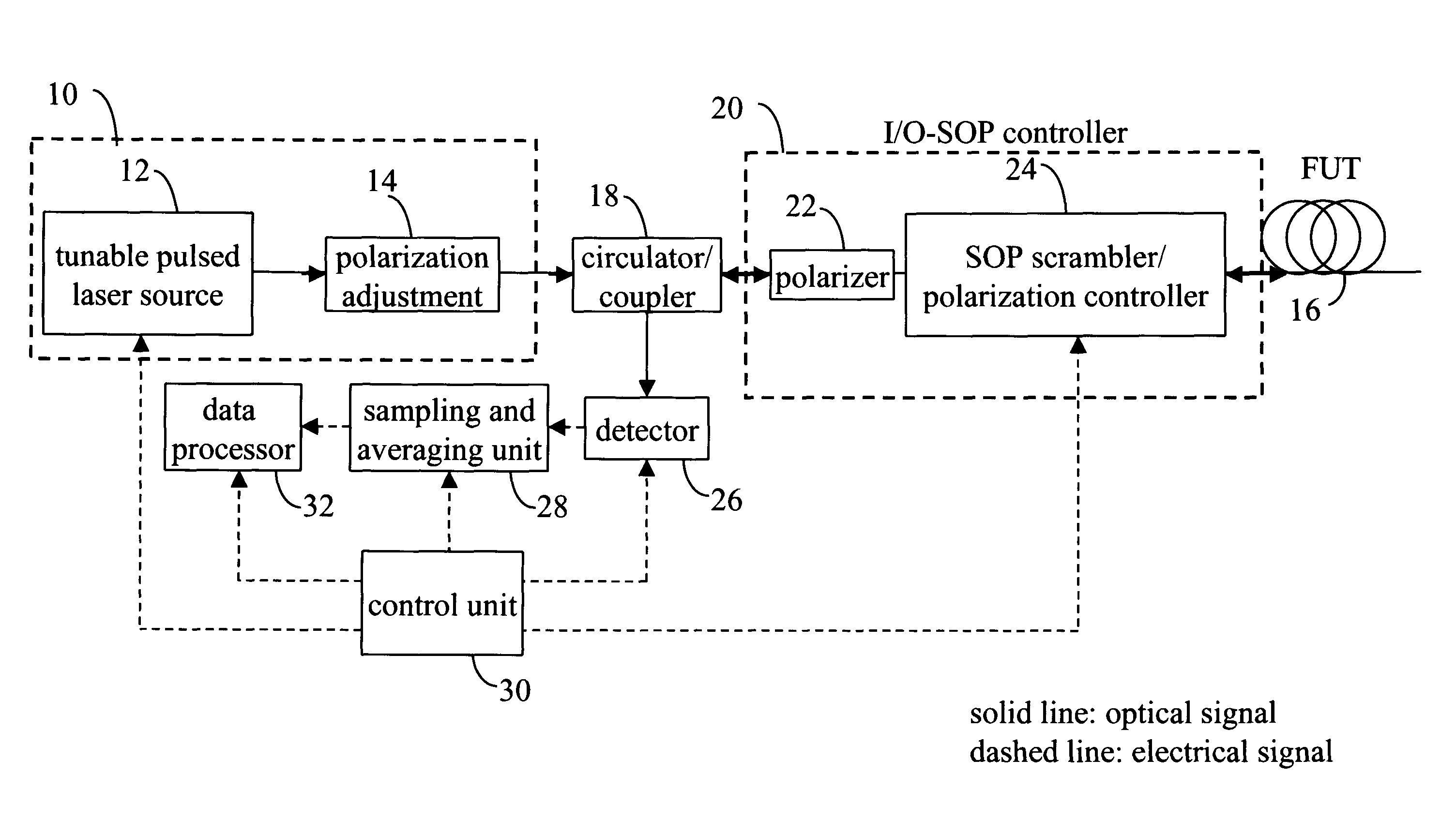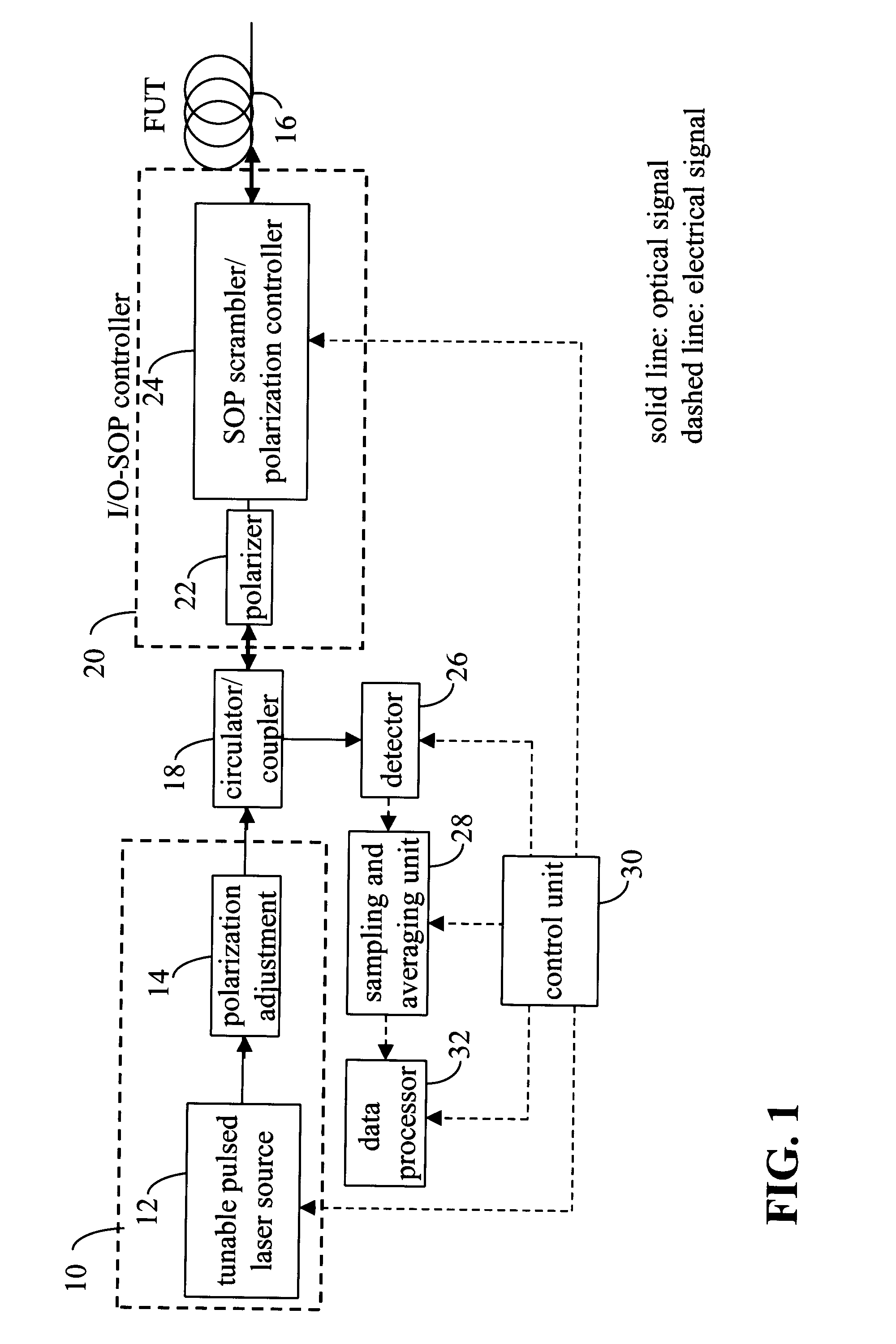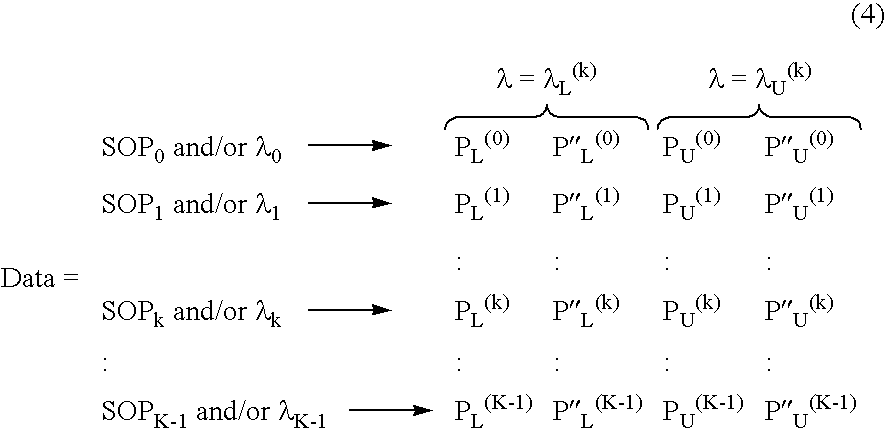Polarization optical time domain reflectometer and method of determining PMD
a reflectometer and optical time domain technology, applied in the direction of reflectometers dealing with polarization, amplifiers, transmission, etc., can solve the problems of increasing bit error rate, limiting the transmission rate or maximum transmission path length, and particularly problematic at higher bit ra
- Summary
- Abstract
- Description
- Claims
- Application Information
AI Technical Summary
Benefits of technology
Problems solved by technology
Method used
Image
Examples
Embodiment Construction
[0075]The quantitative polarization time domain reflectometry (POTDR) means illustrated in FIG. 1 comprises tunable light source means 10 in the form of a tunable laser source 12 and polarization state adjuster 14 for launching light pulses into a fiber-under-test (FUT) 16 via a circulator 18 and polarization control means 20 which comprises a polarizer 22 and a polarization controller 24. It should be noted that the polarization state adjuster is normally “factory set” to maximize the transmission of the light pulses through the polarizer 22 and should not normally need to be subsequently re-adjusted. For convenience, the polarization control means 20 will be referred to as an input / output SOP controller (I / O-SOP). Resulting backreflected light caused by Rayleigh scattering and / or discrete reflections from the (FUT) 16 passes through the I / O-SOP controller 20 in the reverse direction and is conveyed by the circulator 18 to a photodetector 26. The corresponding electrical signal is ...
PUM
| Property | Measurement | Unit |
|---|---|---|
| wavelengths | aaaaa | aaaaa |
| averaging time | aaaaa | aaaaa |
| wavelengths | aaaaa | aaaaa |
Abstract
Description
Claims
Application Information
 Login to View More
Login to View More - R&D
- Intellectual Property
- Life Sciences
- Materials
- Tech Scout
- Unparalleled Data Quality
- Higher Quality Content
- 60% Fewer Hallucinations
Browse by: Latest US Patents, China's latest patents, Technical Efficacy Thesaurus, Application Domain, Technology Topic, Popular Technical Reports.
© 2025 PatSnap. All rights reserved.Legal|Privacy policy|Modern Slavery Act Transparency Statement|Sitemap|About US| Contact US: help@patsnap.com



